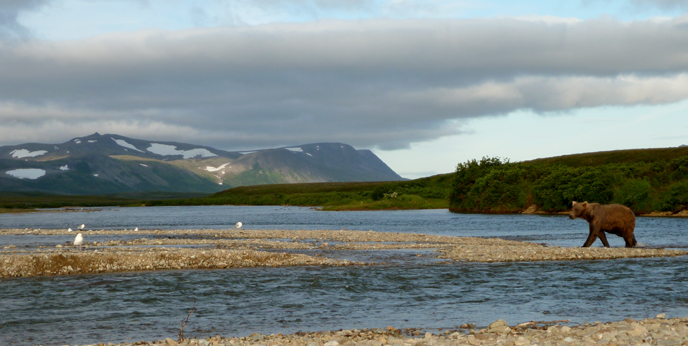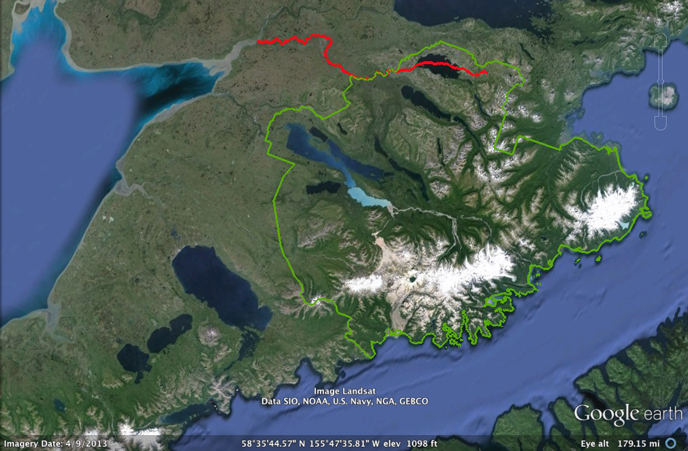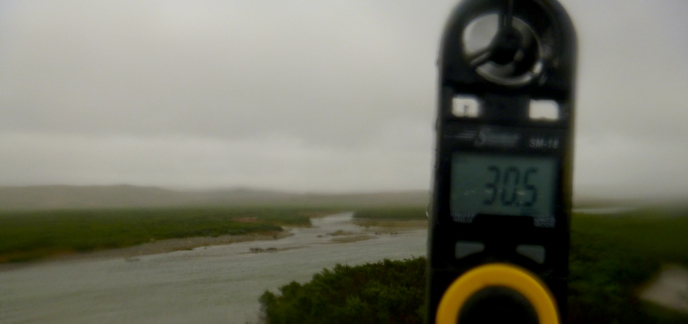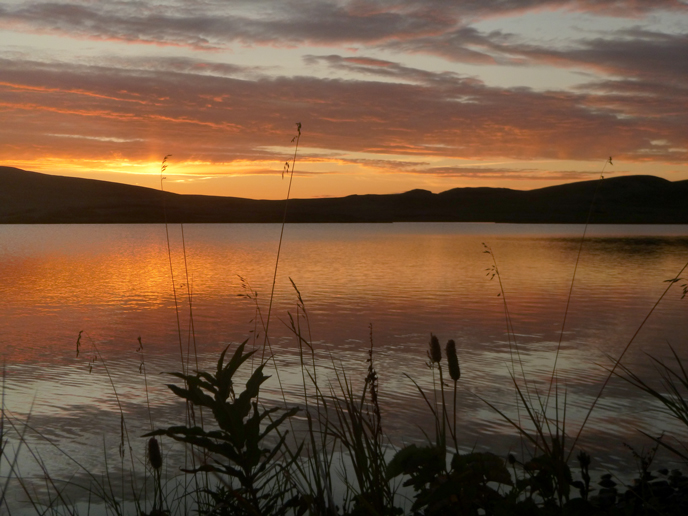
Many bears fish Moraine Creek in August. (NPS/M. Fitz)
Brown bears are the consummate omnivores, and Katmai National Park and Preserve provides an untrammeled land for its most dominant inhabitant to travel in search of food of all shapes and sizes. Bear scat proves this well; one can easily identify blueberries, grass, and pungently digested salmon in summer bear droppings. And come August, the creeks and rivers of the Katmai Preserve, perched atop the northern tip of park, are a place to watch your step for this diversely composed scat.
Maximizing caloric value, though, serves as the bears' unmatched motivator. The bears of Katmai have watched and learned the habits of sockeye salmon well, and they have come to expect the arrival of these salmon at certain times in very specific places. The Brooks River, for instance, is a popular place for a population of brown bears to visit in July and capitalize upon a river that sees an early salmon run. The oldest known Brooks River bear, a large female numbered 410, has been visiting the river for over two decades.
But when the salmon density wanes, bears will depart for more profitable fishing destinations. In August, two creeks and their confluence see another profound concentration of brown bears: Moraine and Funnel Creeks, located in the Katmai Preserve. The salmon here begin arriving in early August after an impressive one hundred mile journey up the serpentine Alagnak River and through Kukaklek Lake. Here, the brown bears shun their solitary tendencies and await the salmon's arrival.

The red line in this satellite image of Katmai marks the freshwater journey of sockeye salmon as they return to Katmai National Preserve. The boundaries of Katmai National Preserve are marked in green. (Google Earth)
These two creeks run in the high tundra, at eleven hundred feet, where the landscape has been carved into smooth slopes and gentle ridges by past glaciers. Moraine Creek is certainly an apt name; it has carved through an impressive cake of glacial deposits containing rocks of all origins and colors, ground together, mixed, and mashed by creeping glaciers. In fact, a popular bear viewing spot is at the edge of these glacial deposits. One can look down twenty feet into the river and observe brown bears dashing at dense clusters of red salmon.
In the glaciers receded absence, one will find that tundra has encroached upon the land-- blueberries and crowberries grow rampant on the ground and upon the hills. Taller shrubs, like green alders find shelter and hospitable growing conditions in the lee of wind protected ridges. Willows, though, are not so particular; they'll grow in the open and adopt a westward leaning character from the incessant east wind.
Even when the creeks are stocked with starkly red fish, the bears will sometimes vanish. Do they take refuge in the willows or bed down beneath the alders? One can't be sure, but some folks think that the wind may make bears more wary. Brown bears rely primarily on their keen sense of smell—a sense several times stronger than that of bloodhounds—but when the wind blows over the open habitat near Moraine Creek, one can experience sustained winds of thirty miles per hour, and gusts all the greater. When howling winds disperse important scents, might the bears become less confident in their surroundings, and consequently become less active? And who can blame them? Would you venture outside if environmental factors made you almost blind?

A handheld anemometer measures sustained winds over 30 miles per hour (49 kilometers/hour). (NPS/S. Wolman)
Indeed, Katmai National Preserve is a wild place. There are no signs, nor benches to sit on. There is no hope of making a phone call or finding shelter from the storm. But that is the attraction of the high tundra in the blowing Katmai Preserve, where nature can be somewhat predictable and the elements fickle, but fleet footed red foxes will pass you on the trail, and they always seem to know where they're going.

(NPS/S. Wolman)
